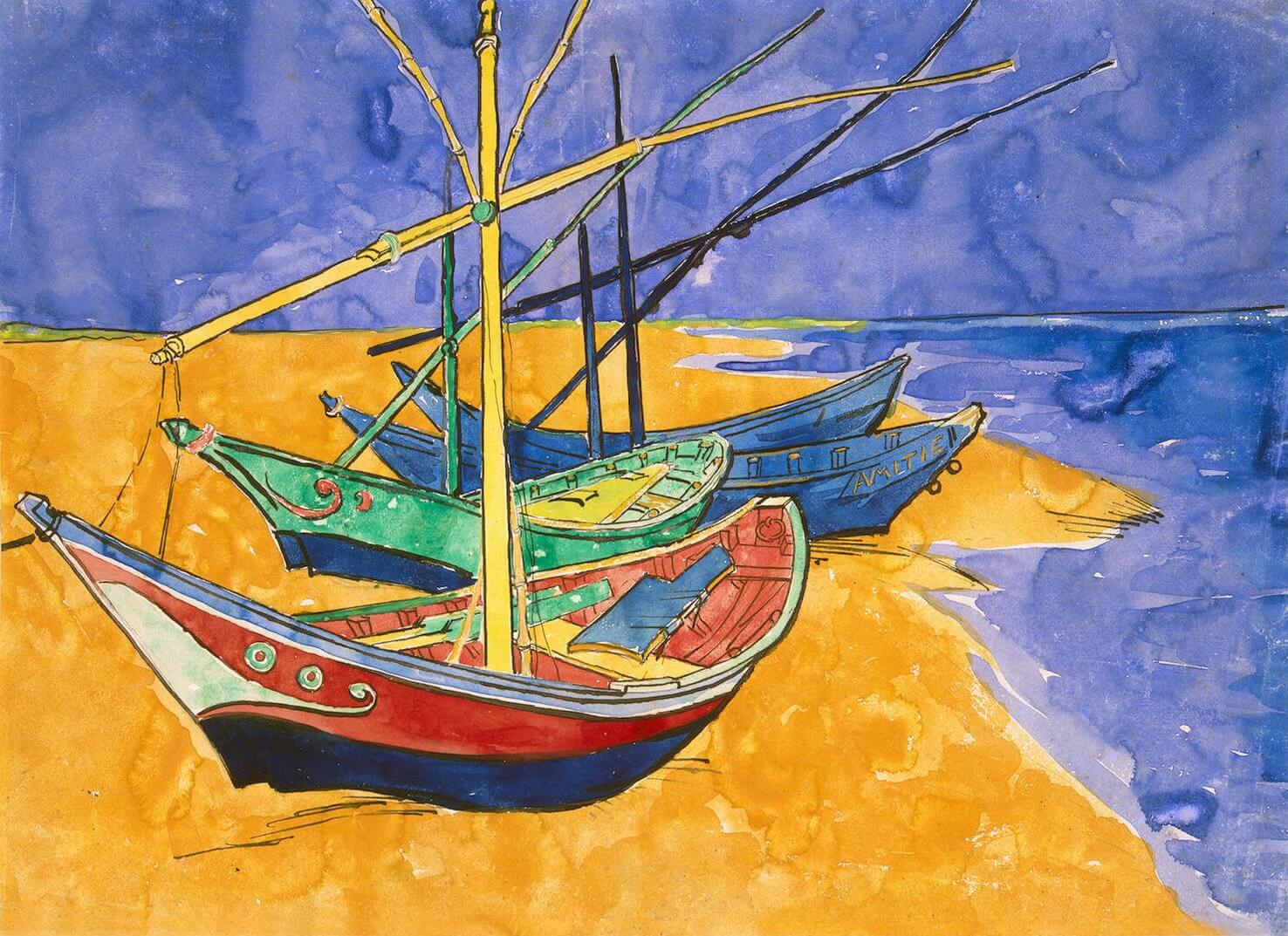Boats at Saintes-Maries-de-la-Mer by Vincent Van Gogh
Why watercolour?
It’s a question I’m asked from time to time because for many people, the picture they have in their mind when the word ‘painting’ is mentioned involves an oil painting hanging on a wall, whether it’s a portrait, a landscape or an abstract painting in Tate Modern. I’ve worked with all sorts of materials – pencil, acrylic, oils and even Chinese Ink, all of which I enjoy greatly. But I’ve always found myself coming back to watercolour.
There is something about the practice of watercolour painting and the finished piece which I’ve found to be unique. Watercolour painting does not really involve the use of paint at all – but coloured water.
Unlike oil painting, when a watercolour brush touches the paper the colour begins to be absorbed immediately and dries very, very quickly. This leaves the artist little time to manipulate what they’ve just brushed onto the page and the whole painting process becomes a race against time. As a result big mistakes are much more tricky to put right. When a painting is going really well, so well that this may be the best painting you’ve ever produced, you know that one wrong move could spoil all that in an instant.
The unpredictability of the medium means you’re only partly in control of what’s happening. That’s what makes it so exciting for me. It is perhaps the most spontaneous medium and the best way to capture the Irish landscape with its temperamental and ever-changing weather. The fleeting shadow from the fast moving cloud or the flash of sun on the sea can be captured as it happens. That’s the reason it was used so much by the great landscape artists such as Turner and Cézanne. Some of Van Gogh’s greatest works were painted with watercolour (see painting above).
In the finished watercolour painting, the page itself is just as important as the brushstrokes on it. The pure white of the paper reflects the light back off it and that’s why the best watercolour paintings have a luminous quality.
When I stand in the Cooley Peninsula and look across Carlingford Lough to the Mournes, what strikes me above all else is that we inhabit a world of light. Such a responsive, sensitive medium as watercolour helps remind us of this fact better than any other.
